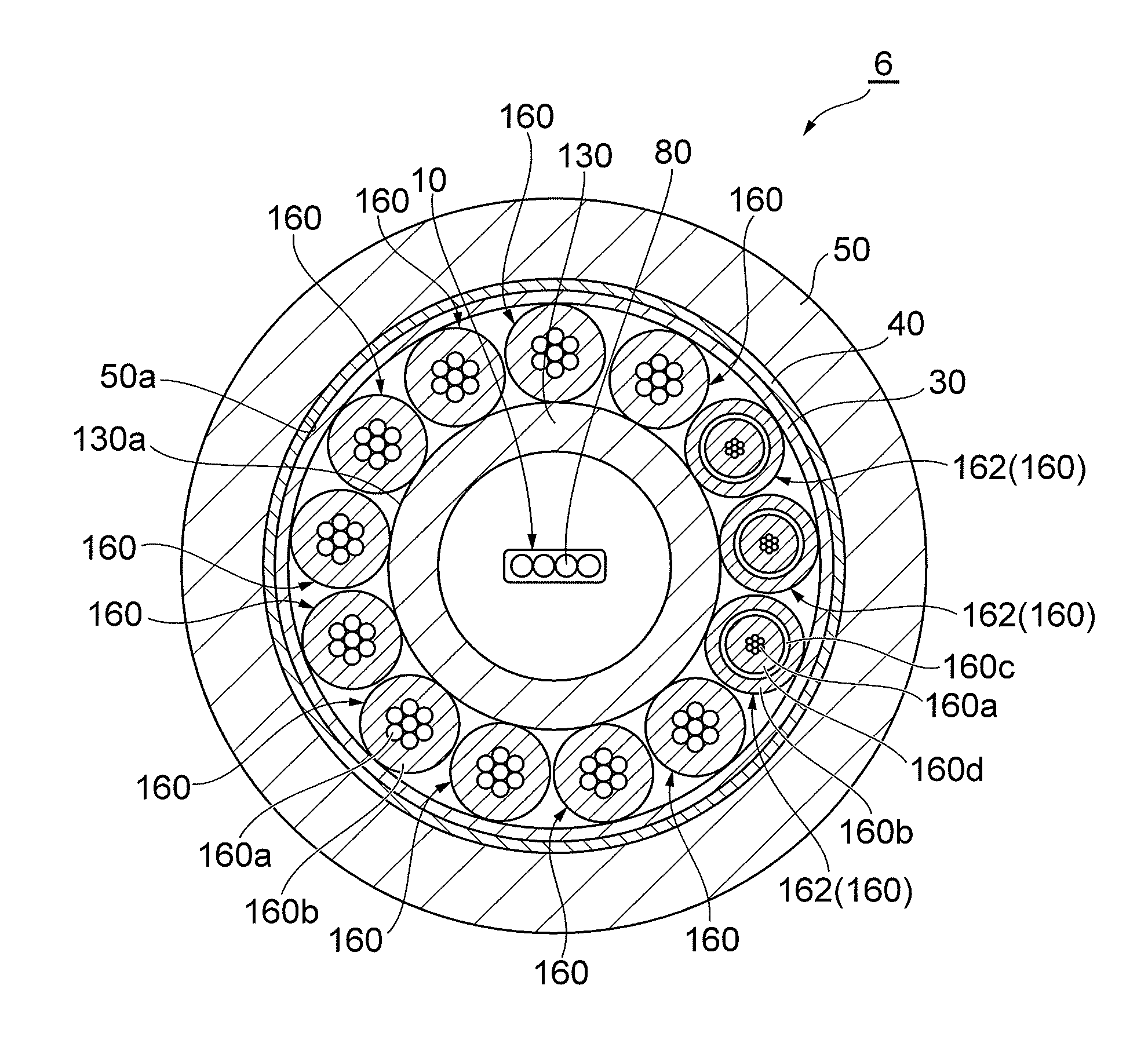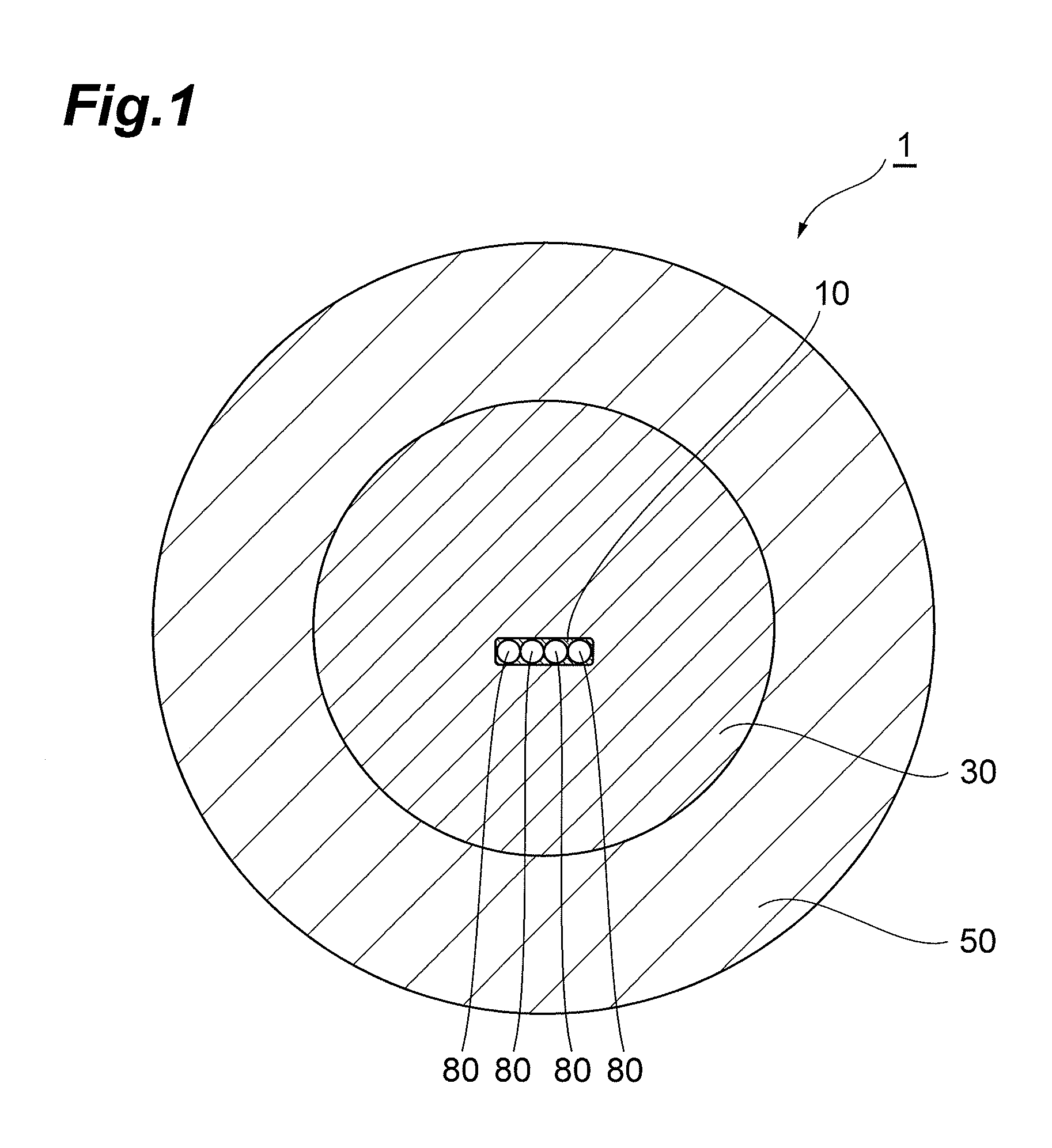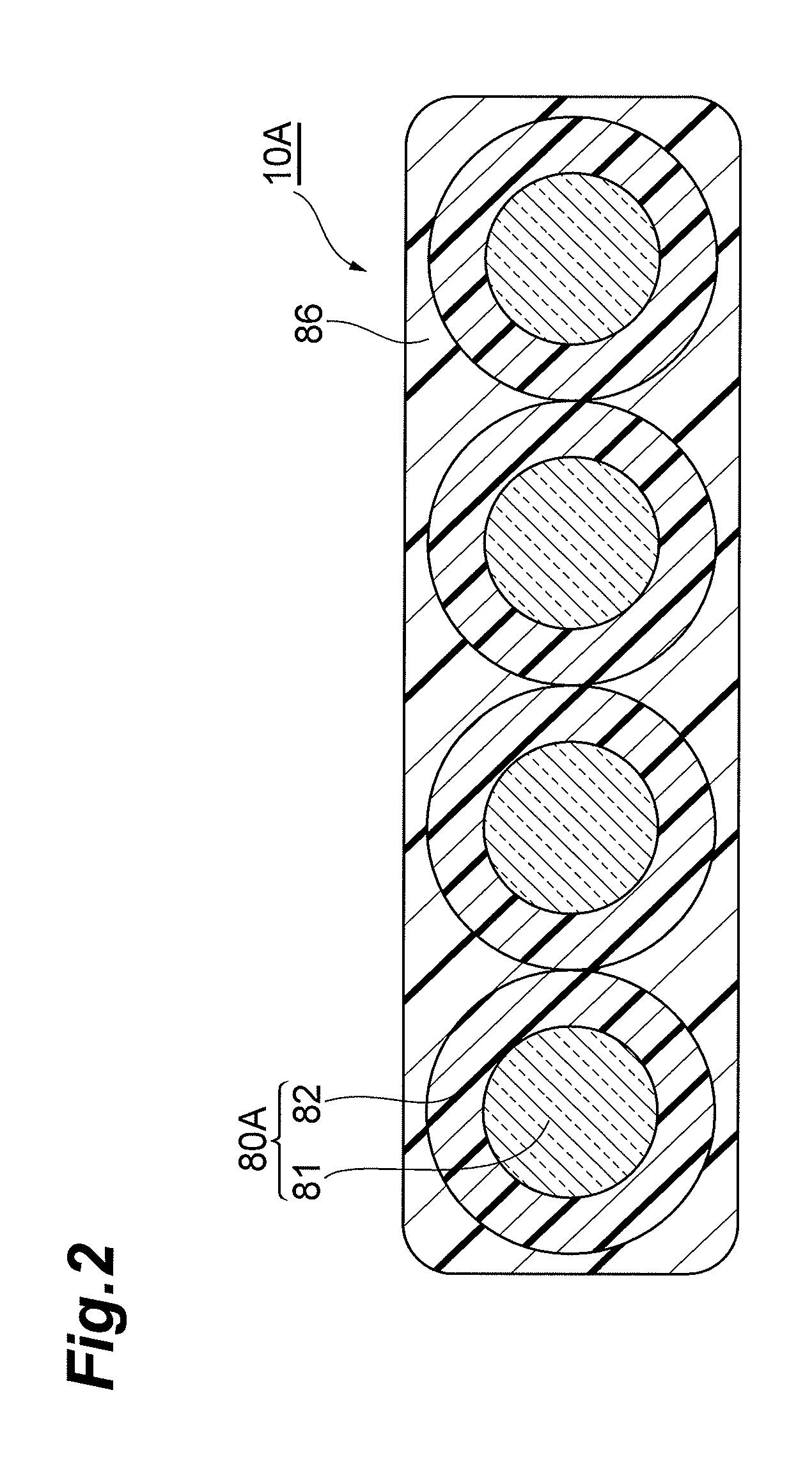Optical cable
a technology of optical fibers and optical fiber ribbons, applied in the field of optical cables, can solve the problems of increasing the transmission loss of each optical fiber, and reducing the flexibility of the optical fiber, so as to facilitate the identification of optical fibers and improve workability
- Summary
- Abstract
- Description
- Claims
- Application Information
AI Technical Summary
Benefits of technology
Problems solved by technology
Method used
Image
Examples
examples
[0090]Examples using the optical cables 1 to 3 of the above-mentioned embodiments 1 to 3 and an optical cable using four optical fibers in place of the optical fiber ribbon as comparative examples will now be explained. FIGS. 10 to 12 are charts listing structures and evaluation results of the respective optical cables in accordance with examples and comparative examples. FIG. 10 illustrates Examples 1 to 9, FIG. 11 Examples 10 to 17, and FIG. 12 Comparative Examples 1 to 6.
[0091]Each chart lists the type of optical fiber, NA of the optical fiber, core diameter of the optical fiber, cladding diameter of the optical fiber, diameter of the primary coating layer of the optical fiber, diameter of the secondary coating layer of the optical fiber, and size of the optical fiber ribbon (four cores) for each of its corresponding examples or comparative examples. In the column of optical fiber type, “HPCF” is an optical fiber whose core and cladding are made of glass and a plastic, respective...
PUM
 Login to View More
Login to View More Abstract
Description
Claims
Application Information
 Login to View More
Login to View More - R&D
- Intellectual Property
- Life Sciences
- Materials
- Tech Scout
- Unparalleled Data Quality
- Higher Quality Content
- 60% Fewer Hallucinations
Browse by: Latest US Patents, China's latest patents, Technical Efficacy Thesaurus, Application Domain, Technology Topic, Popular Technical Reports.
© 2025 PatSnap. All rights reserved.Legal|Privacy policy|Modern Slavery Act Transparency Statement|Sitemap|About US| Contact US: help@patsnap.com



